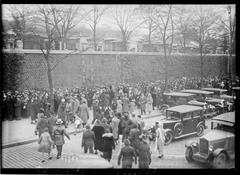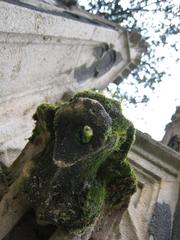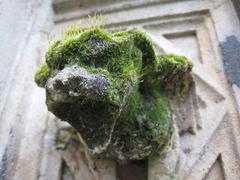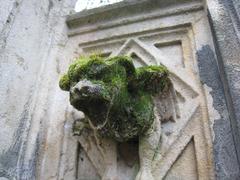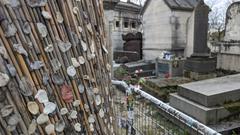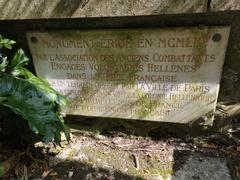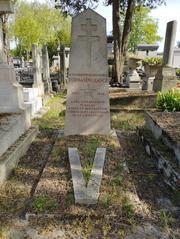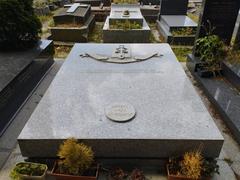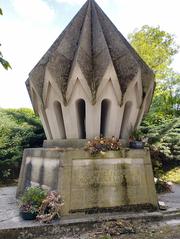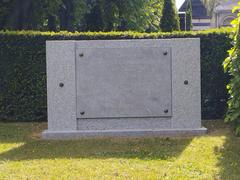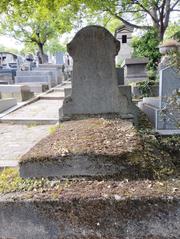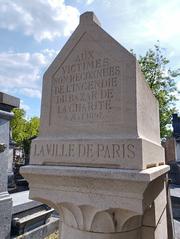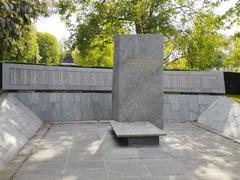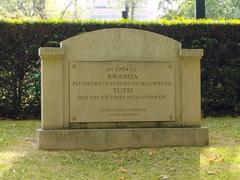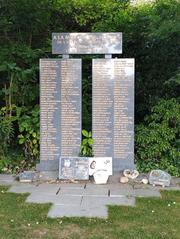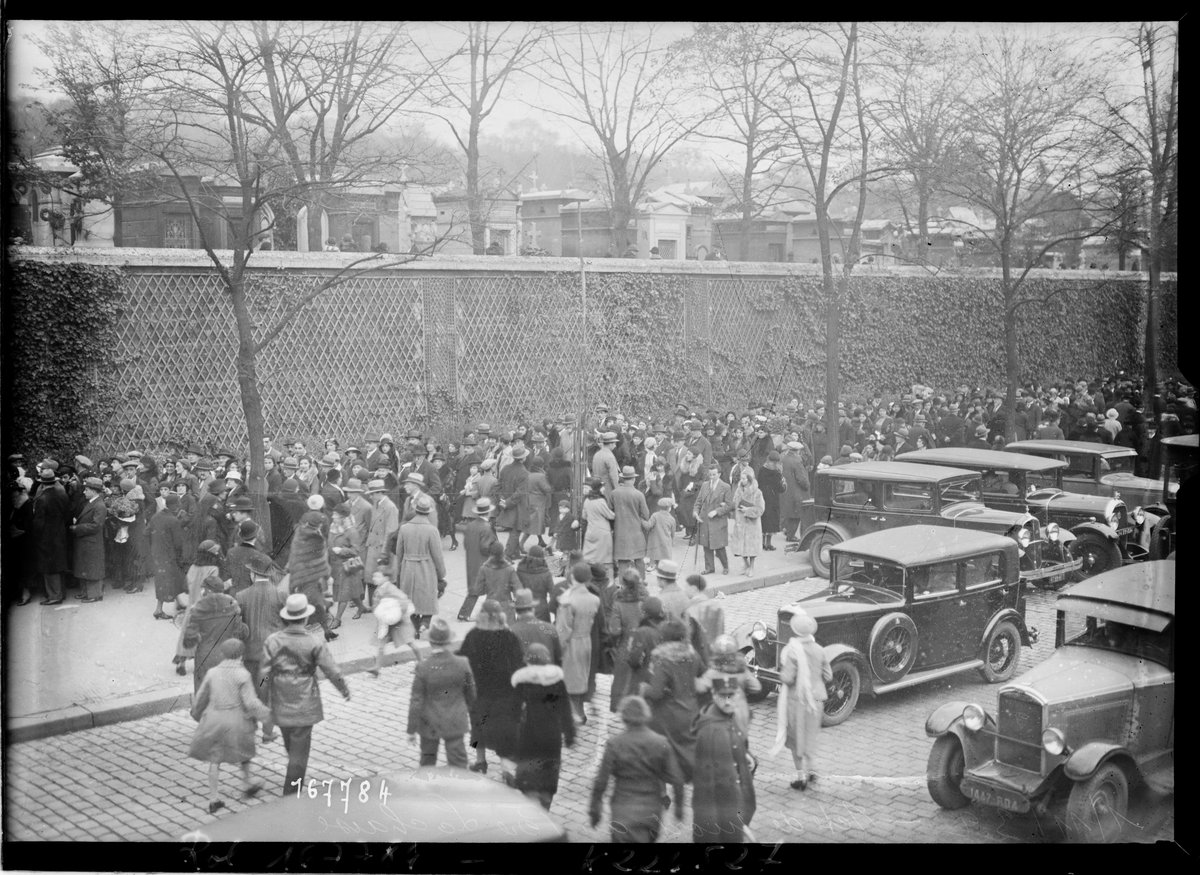
Père Lachaise Cemetery: Visiting Hours, Tickets, and Paris Historical Sites Guide
Date: 14/06/2025
Introduction
Père Lachaise Cemetery is one of Paris’s most iconic and culturally significant landmarks, attracting more than 3.5 million visitors annually to its 44 hectares of landscaped grounds. Established in 1804, it was conceived as Paris’s first garden cemetery, merging scenic English-style landscaping with elaborate funerary art that chronicles the city’s evolving identity (World in Paris; Journey to France). Named after Père François de la Chaise, who served as confessor to King Louis XIV, the cemetery quickly gained prestige through the transfer of celebrated figures such as Molière, Jean de La Fontaine, and the medieval lovers Héloïse and Abélard (Paris Top Ten; Lonely Planet).
Today, Père Lachaise serves both as an active cemetery and an open-air museum, renowned for its diversity of funerary sculpture, and as the final resting place for luminaries such as Frédéric Chopin, Oscar Wilde, Jim Morrison, Édith Piaf, and Marcel Proust (Paris Discovery Guide; Dreamer at Heart). Historical monuments like the Mur des Fédérés and numerous memorials dedicated to victims of war and the Holocaust underscore its role in collective memory and social justice (Paris Top Ten).
With free admission, daily opening, and easy access by public transport, Père Lachaise offers a rich experience through its winding paths and myriad stories. Its proximity to vibrant neighborhoods such as Belleville and Canal Saint-Martin further cements its place in the Parisian cultural itinerary (Sortir à Paris). This guide covers all essential information: visiting hours, ticketing, accessibility, notable graves, and practical tips to help you make the most of your visit (Solo Sophie; Paris Story).
Table of Contents
- Introduction
- Historical Overview
- Practical Visitor Information
- Notable Graves and Memorials
- Essential Visitor Tips
- Frequently Asked Questions (FAQ)
- Conclusion and Call to Action
- References
Historical Overview
Origins and Foundation
Père Lachaise was established in 1804 under Napoleon I to address the crisis of overcrowded inner-city burial grounds (World in Paris). Located on a former Jesuit estate, it was named after Père François de la Chaise, confessor to King Louis XIV (Paris Top Ten). Architect Alexandre-Théodore Brongniart designed it in the English garden style, making it the world’s first garden cemetery—a blend of nature, nobility, and art (Lonely Planet).
Early Development and Popularization
Initially seen as too remote, Père Lachaise gained popularity after the symbolic reburial of famous French figures including Molière, Jean de La Fontaine, and the legendary lovers Héloïse and Abélard. Their transfer in 1817 signaled the cemetery’s transformation into Paris’s most fashionable necropolis (Lonely Planet; World in Paris).
Architectural and Landscape Features
Spanning 44 hectares (110 acres), the cemetery features winding cobblestone paths, rolling hills, and over 5,000 trees. Its 97 divisions range from grand family mausoleums to peaceful tree-lined avenues (Wikipedia; Journey to France; Paris Discovery Guide). The funerary art, from neoclassical tombs to art nouveau and modernist memorials, makes Père Lachaise an unparalleled open-air museum (Dreamer at Heart; Paris Top Ten).
Notable Figures Interred
Père Lachaise is the final resting place for more than a million people, including:
- Frédéric Chopin (composer and pianist)
- Oscar Wilde (playwright and poet)
- Jim Morrison (rock singer)
- Édith Piaf (singer)
- Marcel Proust (novelist)
- Sarah Bernhardt (actress)
- Georges Bizet (composer)
- Guillaume Apollinaire (poet)
- Molière and Jean de La Fontaine (literary icons)
- Héloïse and Abélard (medieval lovers)
(Paris Discovery Guide; France Travel Planner; Journey to France).
Historical Events and Commemorations
Père Lachaise has witnessed pivotal historical events, most notably the Paris Commune of 1871. The Mur des Fédérés (Communards’ Wall) marks the site where 147 Communards were executed, serving as a powerful memorial for social justice (Paris Top Ten). The cemetery also contains monuments to war victims and Holocaust deportees, reinforcing its significance in France’s collective memory.
Evolution as a Cultural Landmark
From its origins as a solution to urban overcrowding, Père Lachaise has become a symbol of Parisian heritage, inspiring writers, artists, and travelers. While still an active cemetery, new burials are rare and reserved for Paris residents or those who die in the city, with strict regulations and limited space (Wikipedia; Journey to France). Restoration efforts continue to preserve its artistic and historical legacy (History Tools).
Practical Visitor Information
Visiting Hours
- April to September: 8:00 AM – 6:00 PM
- October to March: 8:00 AM – 5:00 PM
Hours may vary on public holidays. Always check the official website for the latest information.
Tickets and Admission
- Entry is free for all visitors. No ticket is required.
- Guided tours and special exhibitions may require advance booking and payment through official or private tour operators.
Accessibility
- The main entrances are wheelchair accessible, but the hilly terrain and cobblestone paths can be challenging.
- Main avenues are generally accessible; some divisions and individual graves may be harder to reach.
- Wear comfortable walking shoes.
Getting There
- Metro: Père Lachaise (Lines 2 & 3), Philippe Auguste (Line 2), Gambetta (Line 3)
- Bus: Lines 26, 61, 69, 76, 102, and 20 serve the cemetery area.
- Address: 16 Rue du Repos, 75020 Paris
Guided Tours and Special Events
- Guided tours are offered in multiple languages and cover themes such as literature, art, and history.
- Tours can be booked in advance via the cemetery office or private tour providers (Paris Story).
- The cemetery also hosts commemorations and cultural events, especially on significant anniversaries.
Nearby Attractions
- Explore Belleville and Ménilmontant for street art, cafés, and panoramic views.
- Visit Canal Saint-Martin and Place des Vosges for further cultural immersion.
Notable Graves and Memorials
Père Lachaise is home to many world-renowned graves and artistic memorials. Here are some of the most significant:
- Oscar Wilde (Division 89): Modernist tomb by Jacob Epstein, protected by glass after years of lipstick tributes (The Whole World Is A Playground).
- Jim Morrison (Division 6): A simple grave, regularly adorned by fans (Paris Tourist Information).
- Frédéric Chopin (Division 11): Marked by a statue of Euterpe, the muse of music.
- Édith Piaf (Division 97): A pilgrimage site for admirers of French chanson.
- Héloïse and Abélard (Division 7): Monument to the legendary lovers.
- Molière & Jean de La Fontaine (Division 25): Their adjacent tombs are among the cemetery’s oldest.
- Marcel Proust (Division 85): Modest family grave, often decorated with flowers.
- Mur des Fédérés: Memorial to the Paris Commune martyrs.
- Memorials to war and Holocaust victims, victims of terrorism, and artistic luminaries (Paris Top Ten; Paris Story).
Maps marking these and other famous graves are available at entrances and online (Sortir à Paris).
Essential Visitor Tips
- Wear sturdy shoes: Paths are cobblestoned and can be slippery or uneven.
- Plan your route: With 97 divisions, using a map or navigation app is highly recommended.
- Be respectful: Maintain decorum, avoid loud noises, and do not disturb ceremonies.
- Photography: Allowed for personal use; professional shoots need permission.
- No pets: Except for service animals.
- Food and drink: Eating within the cemetery is discouraged; nearby cafés are available.
- Restrooms: Limited facilities, primarily near the main entrance.
- Safety: Stay on marked paths and be mindful of belongings.
Frequently Asked Questions (FAQ)
Q: What are the visiting hours?
A: Generally, 8:00 AM to 6:00 PM (April–September) and 8:00 AM to 5:00 PM (October–March). Confirm on the official website.
Q: Is there an entrance fee?
A: No, entry is free.
Q: How do I get there by public transport?
A: The nearest metro stations are Père Lachaise (Lines 2 & 3), Philippe Auguste (Line 2), and Gambetta (Line 3). Several bus lines also serve the area.
Q: Are guided tours available?
A: Yes, in multiple languages. Book in advance via the cemetery or local tour providers.
Q: Is it wheelchair accessible?
A: Main entrances and avenues are accessible, but the terrain can be challenging. Contact the cemetery office for advice.
Q: Can I take photos?
A: Yes, for personal use and with respect for the site and other visitors.
Q: Are pets allowed?
A: Only service animals are permitted.
Conclusion and Call to Action
Père Lachaise Cemetery is an essential Paris destination—a place where history, culture, and art merge in a tranquil, park-like setting. By planning your visit according to opening hours, accessibility, and respectful conduct, you’ll gain a deeper appreciation of its treasures. Whether you’re tracing the footsteps of Oscar Wilde, listening to the silence by Chopin’s grave, or simply enjoying the natural beauty, Père Lachaise offers a unique, contemplative experience.
Enhance your visit by downloading the Audiala app for interactive maps and audio guides, and consult the official website for the latest updates. Explore nearby neighborhoods to complete your journey through Paris’s living history.
Stay connected with us for more travel tips, event updates, and restoration news. Follow our social media and check out our other guides to Paris’s historical and cultural attractions.
References and Further Reading
- World in Paris: Père Lachaise Cemetery
- Journey to France: Père Lachaise Cemetery Famous Graves
- Paris Top Ten: Père Lachaise Cemetery
- Lonely Planet: Guide to Père Lachaise
- Paris Discovery Guide: Famous Graves in Père Lachaise
- Dreamer at Heart: How to Visit Père Lachaise Cemetery
- France Travel Planner: Père Lachaise People
- History Tools: Père Lachaise Cemetery
- Sortir à Paris: Père Lachaise Paris’s Most Mythical Cemetery
- The Whole World Is A Playground: Père Lachaise Cemetery Paris Best Graves to Visit
- Paris Tourist Information: Père Lachaise Cemetery
- Paris Story: Père Lachaise Cemetery Paris - How to Get There, Prices and Advice
- Solo Sophie: Famous People Buried in Père Lachaise Cemetery
- Wikipedia: Père Lachaise Cemetery
- Père Lachaise Official Website
